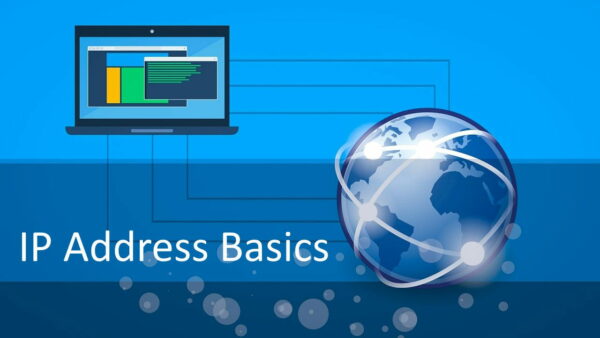✅ Last checked on
In the vast landscape of networking and the internet, IP addresses serve as the digital coordinates that facilitate communication between devices. Understanding IP address basics is essential in comprehending how data flows across the internet and internal networks.
Whether you’re a tech enthusiast or a curious individual, this article will demystify IP addresses and provide you with a solid grasp of their fundamentals.
IP Address: The Key to Digital Communication

An IP address, or Internet Protocol address, is a numerical label assigned to each device connected to a computer network that uses the Internet Protocol for communication. This unique identifier allows devices to locate and communicate with each other within the expansive web of networks that constitute the internet.
The Two Types of IP Addresses
IP addresses are classified into two main types: IPv4 and IPv6.
IPv4 Addresses: The Classic Format
IPv4 addresses, the traditional format, consist of four sets of numbers separated by periods (e.g., 192.168.0.1). Each set can range from 0 to 255, offering a total of approximately 4.3 billion possible combinations. However, the rapid growth of internet-connected devices has led to a shortage of available IPv4 addresses.
IPv6 Addresses: Meeting the Demand
Recognizing the need for more addresses, IPv6 addresses were introduced. These addresses are longer and utilize a hexadecimal format (e.g., 2001:0db8:85a3:0000:0000:8a2e:0370:7334). With this format, IPv6 can provide an astonishing number of unique addresses, ensuring that the demand from the ever-expanding network of devices is met.
IP Address Allocation: How Are They Assigned?
IP addresses are allocated to devices through two primary methods: static and dynamic addressing.
Static IP Addresses: Consistency and Control
A static IP address is manually assigned to a device and remains constant. It offers benefits such as consistency in communication and easier tracking of devices on a network. However, it requires manual configuration and can lead to potential conflicts if not managed properly.
Dynamic IP Addresses: Flexibility and Efficiency
In contrast, a dynamic IP address is assigned by a DHCP (Dynamic Host Configuration Protocol) server. Devices with dynamic IPs receive temporary addresses, allowing for efficient utilization of available addresses. While these addresses can change over time, they are well-suited for networks with a large number of devices that don’t require fixed addresses.
Subnetting: Dividing Networks for Efficiency
Subnetting involves dividing a larger network into smaller subnetworks or subnets. This practice offers several advantages, including enhanced security, better network management, and efficient utilization of IP addresses.
NAT (Network Address Translation): Bridging the Gap
NAT, or Network Address Translation, is a crucial technique that enables multiple devices in a local network to share a single public IP address. This process plays a pivotal role in conserving IPv4 addresses and facilitating internet connectivity for an entire network through a single external address.
FAQs
How does an IP address help in locating devices on the internet?
An IP address acts like a virtual address, allowing data packets to be routed to the correct destination. When you enter a website’s domain name, the associated IP address is used to locate the web server hosting that site.
Are IPv4 addresses becoming scarce?
Yes, the explosion of internet-connected devices has nearly exhausted the pool of available IPv4 addresses. This scarcity is one of the driving factors behind the adoption of IPv6.
Can I change my dynamic IP address?
Yes, but it might change automatically after a certain period or under specific circumstances. If you need a consistent IP, a static address is more suitable.
How do I find my device’s IP address?
You can find your device’s IP address by checking the network settings. On most devices, there’s an option to view the IP address assigned to that device.
Can an IP address reveal my physical location?
While IP addresses can provide a general idea of the geographical area, they can’t pinpoint your exact location. Various factors affect the accuracy of IP-based location data.
Is NAT only relevant for IPv4?
NAT was initially developed to address the shortage of IPv4 addresses, but it’s still relevant for IPv6. It helps conserve IPv4 addresses and aids in network security.
Conclusion
In the intricate realm of networking, understanding IP address basics is akin to grasping the foundation of digital communication. These numerical labels play an indispensable role in enabling devices to connect, communicate, and share information across the vast expanse of the internet. By unraveling the fundamentals of IP addresses, you’ve taken a significant step toward demystifying the digital landscape.
Remember, whether you’re navigating the virtual world or exploring the intricacies of modern technology, a solid grasp of IP address basics empowers you to make the most of our interconnected world.